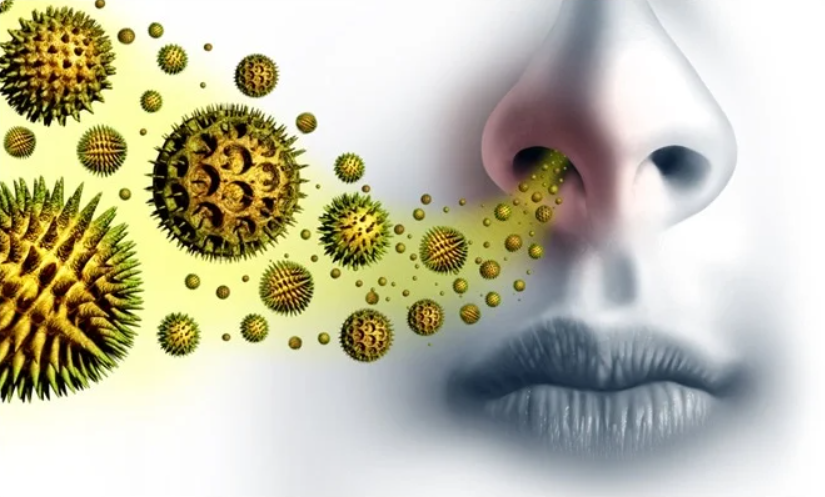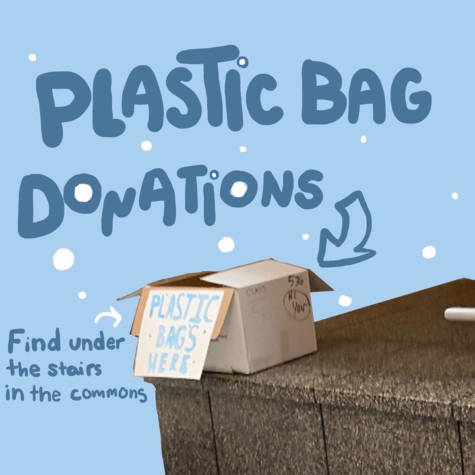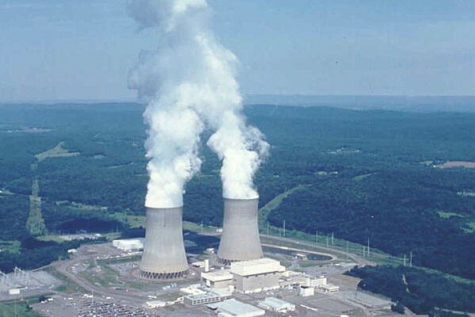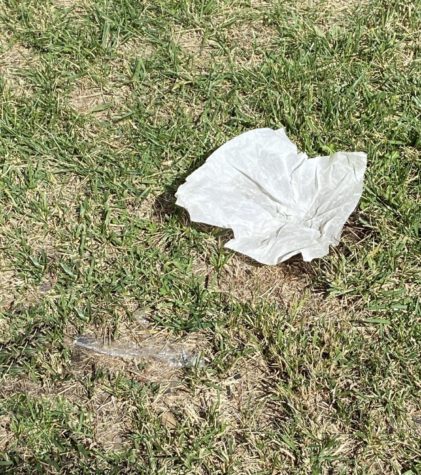The Crisis of Allergies
June 8, 2023
Your allergies are getting worse. Over the years, it has been directly found that people in all parts of the US have experienced more severe, longer lasting, and even potentially permanent allergies. Most surprisingly, adults who have never had allergic problems to environmental allergens like pollen, dust and dander, and mold are now developing new, late-in-life allergy symptoms. All of this is contributes to a flood of runny noses and an avalanche of balled tissues. But it is also a factor in the rising inequality of health in the US, and relates to a fundamental issue with how our understanding of climate and the environment relates to our well being.
Allergies have not always been a thing, and in many places around the world they still are not prevalent, especially natural allergies. Asthma and air-born allergic dispositions have only existed as chronic conditions since around the beginning of the Second Industrial Revolution, the mid- to late-1800s, with allergies generally caused by poor living conditions, specifically with regard to air quality, seasonal temperatures, and how varied of a climate you experience day-to-day
Like many contemporary issues, allergic reactions are increasing largely due to climate change. There is a direct correlation between rising temperatures and seasonal shifts, and the periodicity and intensity of pollen releases, spore growth, and a reduction in air quality due to particulate matter. All plants, but especially trees, use things like average regional precipitation and temperature, as well as other considerations like days of cloud cover and the hormones of neighboring plants to control their seed cycles. Disruptions from climate change make those factors develop earlier, stay for longer, and limit the natural processes that lead to a “declogging” of the air, like light rain events or intermittent days of cool between longer days of heat.
One might presume that if the plants are more active, they would also producemore seeds and develop denser cultures, which would then absorb and filter out common allergens. If the climate was changing in a natural progression, you might see that type of active growth. But most of what is contributing to the harm of this disruption, and what is actually the deeper root to your allergies, is how human development is interacting with the natural world.
According to the Asthma and Allergy Foundation of America (AAFA), the most significant factor that influences the development of an allergy is living situation, not natural exacerbation. So people who live in areas with poor air quality, homogenous biostatic development, or who are particularly housed in a concentration of either of those factors, tend to develop health problems irrespective of age or previous health conditions. Crucially, because it is this manner of human development which affects our allergic health, factors like race, gender, age, and socio-economic status are corollaries to this whole discussion: The degree to which your health suffers under this growing allergy epidemic is directly connected to your standing in society.
Let’s first talk about air quality. Volatile chemicals, fumes and smoke, and natural hazards like mold or pollen tax our body’s respiratory health. Allergies tend to develop when the body either inculcates a disposition to react particularly strongly to getting rid of a certain irritant, or can be pathologic, a habit of consistent effort even when no irritant is present. This form of allergies, pathologic allergies, are particularly harmful to your health, but they are usually only developed in children who are exposed to irritants for a long period of their childhood. Adults are now also developing pathologic allergies, and the running theory is that climate change and a long history of toxic volatile chemicals in living spaces have created an extreme drop in air quality. This drop has led many adults to live in poor quality spaces, which can induce biological changes that lead to pathologic allergies.
The second factor, though, is a much more interesting consideration, and much more insidious. Homogeny is a term that refers to something being uniform. When we are talking about developmental homogeny, imagine your average city block, copy and pasted throughout a city over and over again, with almost no variation in material, shape, size, etc: This is homogenous development. Biostasis is more complicated. Biostasis is essentially the stagnancy of a biological space. Stagnancy in this sense does not mean a lack of change, but rather describes something like a stagnant pool: No current to wash out debris, no feeding stream or spring to keep the water fresh, to channel out to a larger body to keep the water flowing. A biostatic environment is an environment which collects contaminants and has no way to get them out. One might think that this is not something humans intentionally design, and (in this specific case) it is not. But, it is one of the defining biogeographic characteristics of a homogenous environment.
Consider this example. In almost all urban spaces, and over-manicured suburban spaces, the only trees that are planted are male. A popular choice for this is the calorie pear, which is a fast growing, not-too-ugly bushy tree which is sexually dimorphic; The males produce no fruit. This means that there are vast swaths of the US which are intentionally built to have a 100% pollen producing population of trees, and no pollen-absorbing fruit trees to counteract. In the few cases that fruiting trees are grown, as with oaks and walnuts in parks, they are almost always “non-dietary” fruits, which do not mast (which is to say they produce pollen constantly). Now consider the average urban or suburban hardscape: Flat fescue grass, impermeable concrete, baking asphalt. These spaces are built to reduce climate dynamism. They create a biostatic environment, which is compounded by the oversaturation of pollen in the space. It is a feedback loop, where poor development necessitates poor planting, poor planting creates bad air, and bad air hurts the little dynamism left in the system. All for the aesthetic value of flowering male trees.
There are countless examples of this in all manners of development throughout the US; From the urban wealthy to the rural poor, from suburbia to the hood. The placement of concentrated polluters and so called “industrial districts” in “undesirable locations for housing,” creates the homogenous concentration of pollution necessary for biostasis. The disparity in water management between wealthy communities with open water ways that moderate pollution and poor ones without is a similar example. Whole books have been written on just the manner of development that exists to worsen our living conditions: Often, these are employed as deliberate tactics to separate and differentiate communities on lines of wealth, race, or social value. And consider, further, that we could have a free, beautiful, public source of food in cities and suburbs across the country if we simply considered the value in interaction between the biological components of our living spaces. Alas, the poor must not have free food, and so we must suffer allergies for that precious status quo.
If I may insert my opinion here, it is infuriating that literally doing nothing here may in fact leave us better off than doing the something we are doing. A manicured lawn is a sign of wealth, principally because it is both expensive and completely unproductive: We value that sign of wealth over the actual value that exists in that space, and we “invest” into that vapid wealth, even while not doing so would be an overall help. Over time, an increasingly small class have been the only people to even be privy to that wealth, but yet we must all adhere to the standards of that situation. Would it not be better to act in accordance with our actual needs, get rid of our lawns, and put our natural space to active use, or let it become truly nature once again?
But back to our topic at hand. All these factors combined have led to an increase in allergies, with more people reporting allergic reactions this year than the past 25 years, and more reporting new or worse allergies than before. This is an issue of health, because an allergic reaction or asthma can restrict one’s ability to access the necessary environmental qualities of life which have been proven to increase health, especially in disadvantaged places. Outdoor activities and exercise are limited, and one’s body must expend energy fighting an irritant, energy which should otherwise go to fighting illnesses or providing for a vigorous life.
There is too much that could be done in the face of this issue for a clear path to be overwhelmingly obvious. But I would like to present a reasonably accessible course of action though it may seem counterintuitive. If you are concerned about allergies or developing a pathological ailment under poor air and environmental conditions, I would recommend spending more time outside, not less. Don’t let a couple sneezes scare you away from this course, as there are actually many benefits to this simple change of habit which counter the negatives of epidemic allergies.
- Exposure to natural allergens like pollen or particulates has been shown in some cases to reduce one’s negative response over time for pathologic allergies, and can help to build resilience, especially in the face of a growing crisis of poor air quality. Think of any friends you might know who hike or camp a lot: If they grew up near you, they had the exact same environmental factors as you; likely the extra time they spend outside has helped to mitigate allergic reactions.
- Being outside is crucial to one’s health. There are myriad promotions from the public health community of “X amount of hours outside per day will make you happier” or “reduce high blood pressure” or “improve your access to key nutrients and vitamins”, etc., and most all of these claims have been empirically proven. Humans are naturally outdoor creatures, and our bodies and nervous systems respond positively to being outdoors, especially if being outdoors includes being near to plants, water, open sunlight, and non-climate-restricted spaces (no hardscaping or restrictive development). Don’t let allergies stop you from accessing that resource.
- The inside of your house is possibly the most biostatic space you can be in. The average American urban home is essentially a sink for harmful molds, particulates, volatiles like smog or chemical byproducts, among other things. Isolating yourself indoors is one of the most common ways that people develop late in life allergies or worsen their allergic conditions, with a large number of those studied over the past 5 years citing they spend a great deal of time indoors. This includes for work or school, wherein you should assert your right to health and encourage greater ventilation, indoor plantings, or freedom to take breaks or take lunch outdoors.
- Asserting your environmental sovereignty is the first step in fighting climate change. Use your outdoor space even if it is poor, because in using it you will help cultivate a future possibility of wholesome development. Our own city of Baltimore is a perfect example of this, with many redlined, traditionally disregarded and polluted neighborhoods in majority African American and immigrant communities have recently taken to revitalizing the green space or abandoned spaces around them. This manner of social action is only possible if you see, physically see and witness, the existing poor disposition of your community. Even as it might be aggravating to your health in some manner, it will not change unless you and your community have the impetus to do so by being present, and begin valuing doing so because you find value in being outdoors.
With all this considered, it should be noted that this is but a small issue when it comes to the wider effects of climate change. But everybody has allergies, and in our current climate that is not really an overstatement. And also, these trends of development are universal, whether you live on the South Side of Chicago or in Savannah Georgia or Beverly Hills. If you are aggravated by your allergies, it is important to approach them with an understanding of what they really are: Not just an inconvenience, but a health risk. With that understanding, you can begin to address the wider issues that have caused this development, and build a greater sense for the ways in which your life and community, and the communities of others similarly afflicted, can be changed to remove this possibility in the future.








